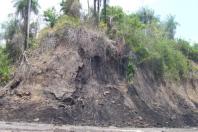Wyoming lands open for leasing for oil shale
Wyoming lands open for leasing for oil shale
Saturday, March 23, 2013
Nearly 300,000 acres of land in Wyoming are available for oil shale leasing. Oil shale is an organic-rich sedimentary rock that can produce liquid hydrocarbons called shale oil, which can be used instead of crude oil.
U.S. Secretary of the Department of the Interior Ken Salazar announced final plans March 22 for continuing to encourage research, development and demonstration of oil shale and tar sands resources on Bureau of Land Management lands in Colorado, Utah and Wyoming.
BLM Spokesperson Amy Krause said the 291,944 acres proposed to be open for leasing are mostly near Rock Springs.
Wyoming Republican U.S. Senator John Barrasso said the Obama Administration’s decision vastly reduces the acreage available for oil shale development.
“Once again, this Administration has chosen to block access to American energy in the west instead of supporting policies that promote our nation’s energy security.
“Today’s decision to reduce—by about 66 percent—the amount of federal lands available for oil shale production in Wyoming, Colorado, and Utah will have a direct, negative impact on job growth in the west. This plan will only lead to more uncertainty and discourage companies from investing in American energy production.
“If the administration is serious about creating jobs and increasing American energy production, they will scrap this plan and instead fully support producing our oil shale resources.”
Sportsmen for Responsible Energy Development commended elements of the decision that will require additional research before the lands are leased to development interests.
“We need to understand the impacts that extracting and processing oil shale and tar sands will have on water quality and supply as well as fish, wildlife and air quality,” said Michael Saul, attorney for National Wildlife Federation, which is an arm of the SERED coalition. “We know almost nothing about the potential risks because after about a century of efforts, no commercially viable technology to tap the shale exists. We hope the Interior Department’s plan will give us time to assess the effects and make sure that companies have economically and environmentally sound processes in place before any commercial leases are issued.”
The opening of lands for leasing doesn’t exactly initiate any action, Krause said. Companies that wish to lease out lands for oil shale would have to submit an application for a research-and-demonstration lease, and any applications submitted would be individually studied and analyzed more extensively, Krause said.
No applications have been submitted yet for lands in Wyoming, she said. Seven have been submitted for Colorado and one for Utah.
The BLM will also begin soliciting public comments for 60 days on proposed revisions to the commercial oil shale regulations, Krause said.
The proposed rule identifies several options for amending the royalty rates for commercial oil shale production, and the BLM will consider whether to retain some flexibility to adjust royalty rates when more information is available about costs of production, energy inputs and technology impacts.
The largest known domestic oil shale deposits are in a 16,000-square mile area in the Green River formation in Colorado, Utah and Wyoming. Oil shale can be mined and heated to an extremely high temperature (retorting) in above ground facilities, and the oil can then be separated from the resulting liquid.
http://www.rawlinstimes.com/news/article_477ca5fa-9360-11e2-97bf-001a4bc...


